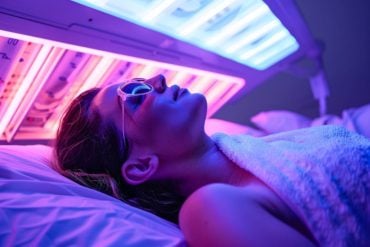Summary: According to researchers, non-medical use of prescription opioids has more than doubled among US adults within a 10 year period.
Source: NIH.
Almost 10 million U.S. adults report misusing prescription opioids in 2012-2013.
Nonmedical use of prescription opioids more than doubled among adults in the United States from 2001-2002 to 2012-2013, based on a study from the National Institute on Alcohol Abuse and Alcoholism (NIAAA), part of the National Institutes of Health. Nearly 10 million Americans, or 4.1 percent of the adult population, used opioid medications in 2012-2013 a class of drugs that includes OxyContin and Vicodin, without a prescription or not as prescribed (in greater amounts, more often, or longer than prescribed) in the past year. This is up from 1.8 percent of the adult population in 2001-2002.
More than 11 percent of Americans report nonmedical use of prescription opioids at some point in their lives, a considerable increase from 4.7 percent ten years prior.
The number of people who meet the criteria for prescription opioid addiction has substantially increased during this timeframe as well, with 2.1 million adults (0.9 percent of the U.S. adult population) reporting symptoms of “nonmedical prescription opioid use disorder (NMPOUD),” according to the Diagnostic and Statistical Manual of Mental Disorders, Fifth Edition (DSM-5).
“The increasing misuse of prescription opioid pain relievers poses a myriad of serious public health consequences,” said Nora D. Volkow, M.D., director of the National Institute on Drug Abuse (NIDA), which contributed funding for the study. “These include increases in opioid use disorders and related fatalities from overdoses, as well as the rising incidence of newborns who experience neonatal abstinence syndrome. In some instances, prescription opioid misuse can progress to intravenous heroin use with consequent increases in risk for HIV, hepatitis C and other infections among individuals sharing needles.”
Scientists analyzed data from NIAAA’s National Epidemiologic Survey on Alcohol and Related Conditions-III (NESARC-III), ongoing research that examines alcohol and drug use disorders among the U.S. population, as well as associated mental health conditions.
The study appears online today in the Journal of Clinical Psychiatry.
Prescription opioid misuse is an urgent public health problem, with drug poisoning deaths involving opioid analgesics, which includes both prescription and illicit opioids, quadrupling between 1999 and 2014, according to the Centers for Disease Control and Prevention. Emergency department visits increased by 153 percent from 2004 to 2011, based on data from the Substance Abuse and Mental Health Services Administration’s Drug Abuse Warning Network.
“Given the dramatic increase in nonmedical use of prescription opioids, it is important that clinicians and patients also recognize the potent interaction of opioids with alcohol and other sedative-hypnotic drugs – an interaction that can be lethal,” said NIAAA Director George F. Koob, Ph.D.
People who develop alcohol use disorder at some point in their lives are nearly twice as likely to also develop opioid use disorder, based on NESARC-III data.
Similar to other substance use disorders, prescription opioid use disorder includes symptoms such as:
- taking the drug in larger amounts or over a longer period than was intended
- the persistent desire to cut down or control use/unsuccessful efforts to do so
- failure to fulfill major role obligations at work, school or home as a result of prescription opioid use
- symptoms of tolerance and/or withdrawal
Rates of nonmedical prescription opioid use were greatest among men, those with annual incomes less than $70,000, those previously married, and with a high school-level education or less. Use was greater among whites and Native Americans and those living in the Midwest and West.
Study results also show that few people misusing prescription opioids receive treatment. Based on NESARC-III data, only about 5 percent of people misusing prescription opioids in the past year and 17 percent of those with prescription opioid use disorder ever receive help. Evidence-based treatment options for addiction to prescription opioids include medications and behavioral counseling approaches.

“The national data from NESARC-III substantially advances what we know about prevalence, co-occurring disorders and treatment rates,” said senior author Bridget Grant, Ph.D., Ph.D., chief of the NIAAA Laboratory of Epidemiology and Biometry. “Prior to this analysis, there was a lack of current epidemiologic data on nonmedical prescription opioid use and prescription opioid use disorder using DSM-5 criteria.”
Based on the 2012-2013 NESARC-III data, 2.1 percent of U.S. adults (4.8 million) have ever had prescription opioid use disorder in their lifetime and 0.9 percent had this disorder in the past year, according to DSM-5 criteria. This compares to 1.4 percent lifetime and 0.4 percent past year rates in 2001-2002, with slightly different criteria under the DSM-IV. Rates for 2012-2013 NESARC-III using DSM-IV criteria were 2.9 percent and 0.8 percent, respectively.
Overall, the study found that nonmedical prescription opioid use among U.S. adults has increased by 161 percent from 2001-2002 to 2012-2013 while prescription opioid use disorder has increased by 125 percent. The authors suggest that this may be due in part to increase in opioid prescribing and dosage, lessened perception of risk because of its legality, and lack of understanding of addictive potential.
The researchers found that nonmedical prescription opioid use and prescription opioid use disorder are linked to other drug use disorders, and a variety of mental health disorders including posttraumatic stress disorder, and borderline, schizotypal, and antisocial personality disorder. Persistent depression and major depressive disorder are linked to nonmedical prescription opioid use, while bipolar I disorder is linked to prescription opioid use disorder.
Funding: Funding provided by the NIH, NIAAA and NIDA.
Source: NIAAA/NIH
Image Source: This NeuroscienceNews.com image is in the public domain.
Original Research: Abstract for “Nonmedical Prescription Opioid Use and DSM-5 Nonmedical Prescription Opioid Use Disorder in the United States” by Tulshi D. Saha, PhD; Bradley T. Kerridge, PhD; Risë B. Goldstein, PhD, MPH; S. Patricia Chou, PhD; Haitao Zhang, PhD; Jeesun Jung, PhD; Roger P. Pickering, MS; W. June Ruan, MA; Sharon M. Smith, PhD; Boji Huang, MD, PhD; Deborah S. Hasin, PhD; and Bridget F. Grant, PhD, PhD in Journal of Clinical Psychiatry. Published online June 2016 doi:0.4088/JCP.15m10386
[cbtabs][cbtab title=”MLA”]NIH. “Rates of Non-Medical Prescription Opioid Use and Opioid Use Disorder Has Doubled in 10 Years.” NeuroscienceNews. NeuroscienceNews, 25 June 2016.
<https://neurosciencenews.com/opioid-use-10-years-4567/>.[/cbtab][cbtab title=”APA”]NIH. (2016, June 25). Rates of Non-Medical Prescription Opioid Use and Opioid Use Disorder Has Doubled in 10 Years. NeuroscienceNews. Retrieved June 25, 2016 from https://neurosciencenews.com/opioid-use-10-years-4567/[/cbtab][cbtab title=”Chicago”]NIH. “Rates of Non-Medical Prescription Opioid Use and Opioid Use Disorder Has Doubled in 10 Years.” https://neurosciencenews.com/opioid-use-10-years-4567/ (accessed June 25, 2016).[/cbtab][/cbtabs]
Abstract
Nonmedical Prescription Opioid Use and DSM-5 Nonmedical Prescription Opioid Use Disorder in the United States
Objective: The authors present 12-month and lifetime prevalence, correlates, psychiatric comorbidity, and treatment of nonmedical prescription opioid use (NMPOU) and DSM-5 NMPOU disorder (NMPOUD).
Methods: Data were derived from the 2012–2013 National Epidemiologic Survey on Alcohol and Related Conditions-III (NESARC-III) (N = 36,309).
Results: Prevalences of 12-month and lifetime NMPOU were 4.1% and 11.3%, exceeding rates in the 2001–2002 NESARC (1.8%, 4.7%). Twelve-month and lifetime rates of DSM-5 NMPOUD were 0.9% and 2.1%. NESARC-III DSM-IV NMPOUD rates (0.8%, 2.9%) were greater than those observed in the 2001–2002 NESARC (0.4% and 1.4%). Rates of NMPOU were greater among men, but no sex differential was observed for NMPOUD. Prevalences of NMPOU and NMPOUD were generally greater among 18- to 64-year-old individuals, whites, and Native Americans, and individuals with lower socioeconomic status. Associations were observed between 12-month and lifetime NMPOU and NMPOUD and other drug use disorders, posttraumatic stress disorder, and borderline, schizotypal, and antisocial personality disorders; persistent depression and major depressive disorder (for NMPOU); and bipolar I disorder (for NMPOUD). Only 5.5% and 17.7% of individuals with 12-month NMPOU and NMPOUD were ever treated.
Conclusions: NMPOU and NMPOUD have considerably increased over the past decade, are associated with a broad array of risk factors and comorbidities, and largely go untreated in the United States. More information on the determinants, characteristics, and outcomes of NMPOU and NMPOUD is needed to support evidence-based interventions and prevention.
“Nonmedical Prescription Opioid Use and DSM-5 Nonmedical Prescription Opioid Use Disorder in the United States” by Tulshi D. Saha, PhD; Bradley T. Kerridge, PhD; Risë B. Goldstein, PhD, MPH; S. Patricia Chou, PhD; Haitao Zhang, PhD; Jeesun Jung, PhD; Roger P. Pickering, MS; W. June Ruan, MA; Sharon M. Smith, PhD; Boji Huang, MD, PhD; Deborah S. Hasin, PhD; and Bridget F. Grant, PhD, PhD in Journal of Clinical Psychiatry. Published online June 2016 doi:0.4088/JCP.15m10386






